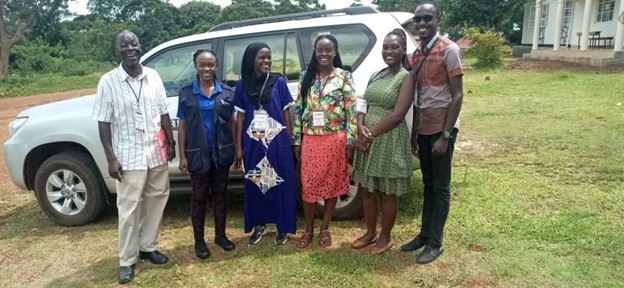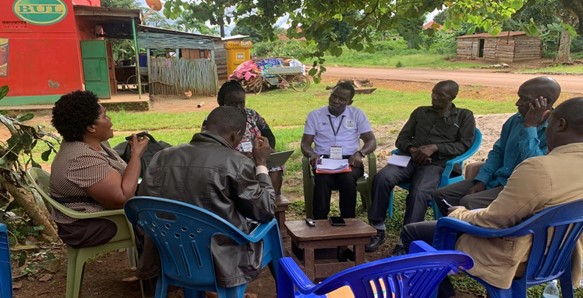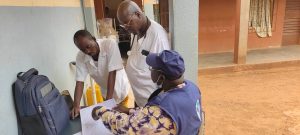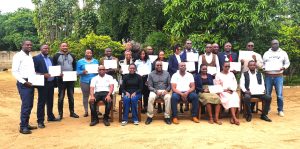MakSPH, AFENET join hands to strengthen mortality surveillance systems in two island districts in Uganda
-
by
AFENET
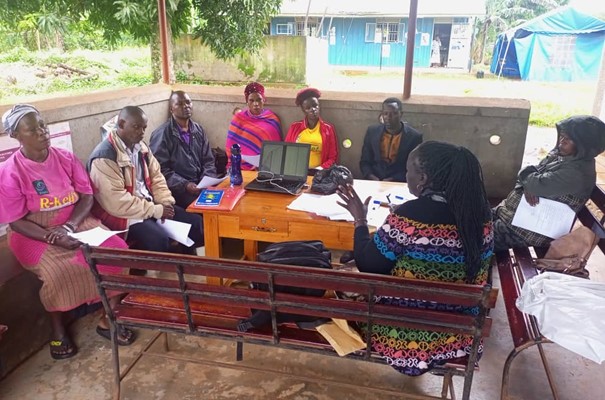
The African Field Epidemiology Network (AFENET) joined researchers from Makerere University School of Public Health (MakSPH) for field work in two Uganda island districts of Buvuma and Kalangala where the latter is implementing a project aimed at strengthening mortality surveillance systems.
MakSPH is one of three recipients of mini grants administered by AFENET in collaboration with the CDC Foundation and the Bloomberg Philanthropies Data for Health Initiative (D4H). The MakSPH implementation research project aims to strengthen mortality surveillance systems in Buvuma and Kalangala districts by improving the capacity of notifying and reporting deaths and causes of death in communities by health facility and community health workers and leaders.
AFENET Epidemiologist, Dr Rose Nampeera, joined the MakSPH team from May 1 – 5, 2024 and observed focus group discussions and key informant interviews. She said through these interactions, the research team engaged key stakeholders on existing processes, challenges, and potential avenues for improvement regarding death notification and reporting.
According to formative studies by MakSPH Kalangala and Buvuma face a number of challenges when it comes to death notification and registration, which may be due to limited access to health facilities and a poor transportation network caused by waterbody boundaries.
From April 28 – May 9, 2024, the Research team collaborated with the National Identification & Registration Authority (NIRA) offices and district health offices in Kalangala and Buvuma districts to conduct field data collection activities.
Interviews were conducted among the Assistant District Health Officer (Maternal and Child Health), ADHO Environmental Health (Surveillance Officer), Health Workers, Village Health Teams (VHTs), Local Leaders, and Police Officers in Charge (OCs).
According to Mr Douglas Bulafu, the MakSPH Mortality Surveillance Project Coordinator, data was collected in seven sub-counties, including Buvuma Town Council, Nairambi, Busamuzi, and Buwoya sub-counties in Buvuma District, as well as Kalangala Town Council, Bujumba, and Mugoye sub counties in Kalangala District.
“In Buvuma, we were able to conduct a total of ten key informant interviews, four focus group discussions and ten in depth interviews among four notifiers of community deaths, two notifiers of facility deaths and four non notifiers of community deaths,” said Mr Bulafu in a debrief. “In Kalangala, we were able to conduct ten Key informant interviews, four focus group discussions [2 among LC1s and 2 among VHTs], and ten in depth interviews among four notifiers of community deaths, two notifiers of facility deaths and four non notifiers of community deaths.”
However, due to the archipelagic nature of Buvuma and Kalangala districts, the researchers were faced with a number of challenges ranging from difficult travel of participants from the different islands to poor cellular telephone networks which disrupted communication. The heavy rains that rendered some of the roads impassable, delayed work on some days.
Mortality surveillance aims at helping countries assess population health status and inform planning, resource allocation, and evaluation of public health interventions.
Despite the significance of death notification and reporting, a recent study by Atuhaire and others published in the journal PLOS ONE found that according to NIRA, only 1% of deaths are registered annually, while the Uganda Bureau of Statistics estimated death registration at 24% for the period 2011–2016.
